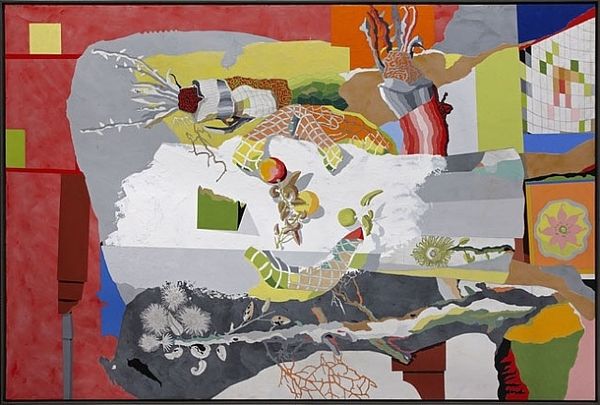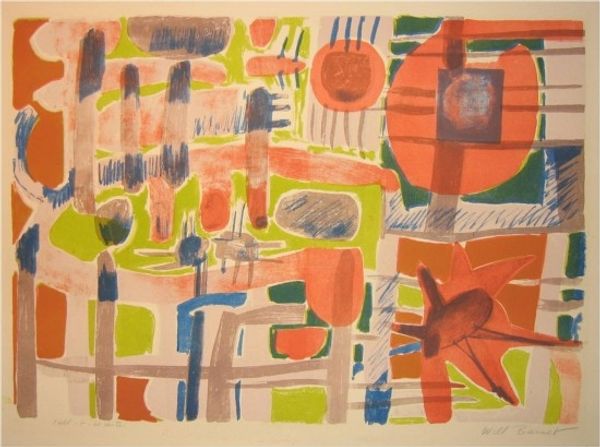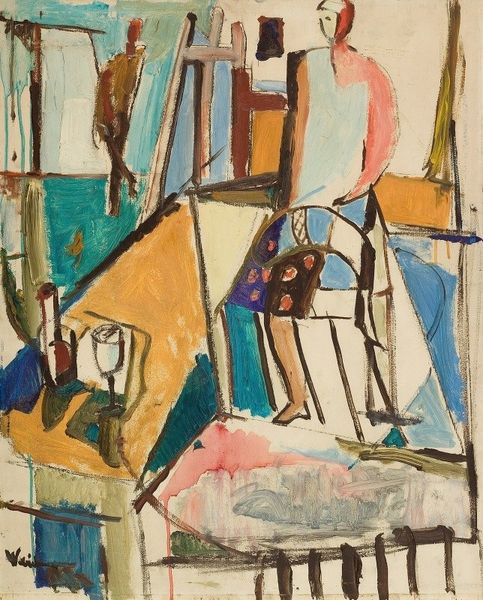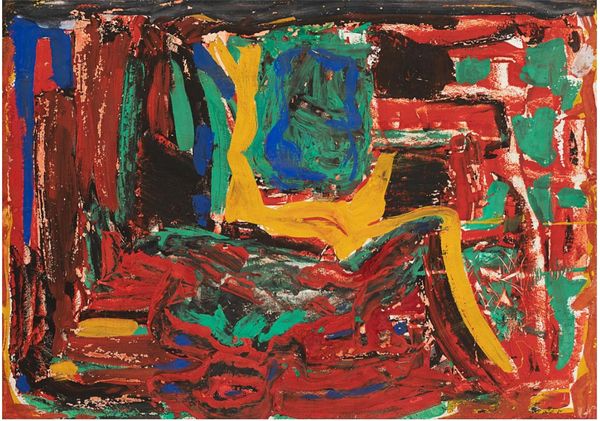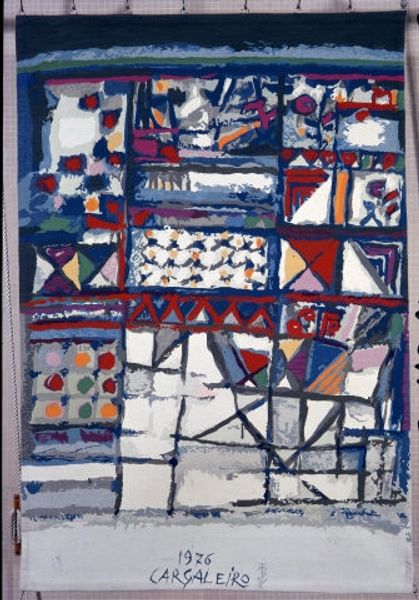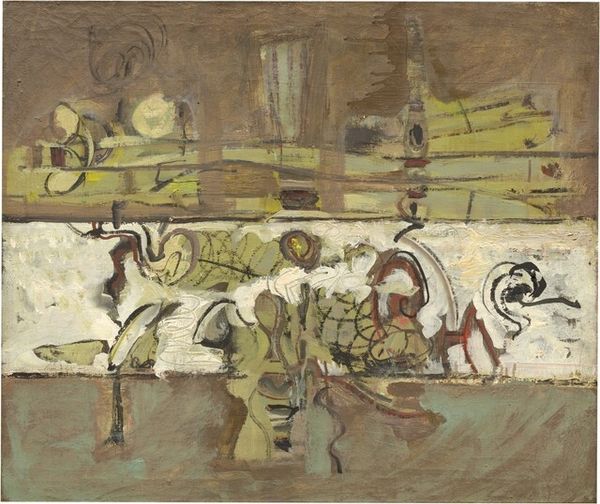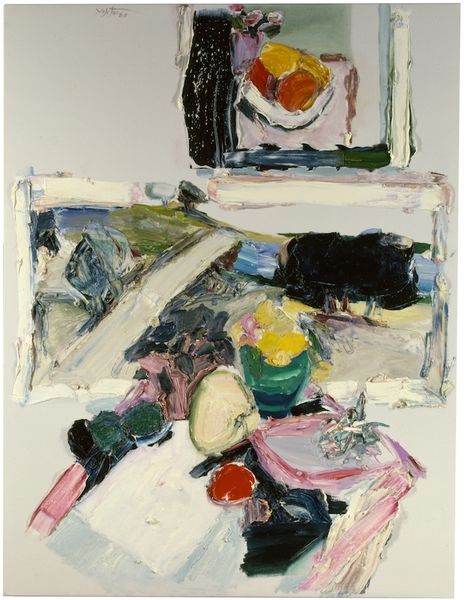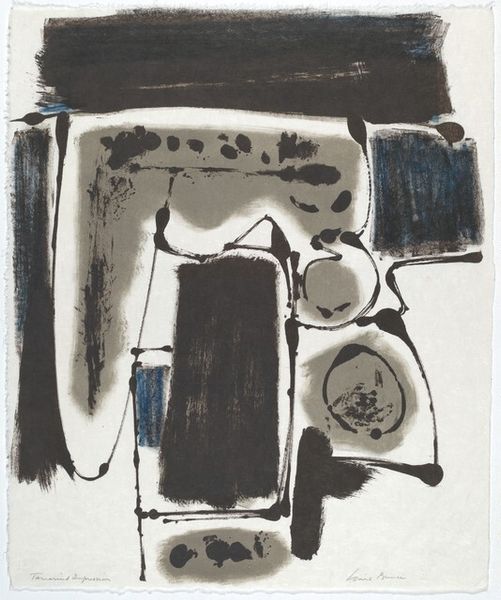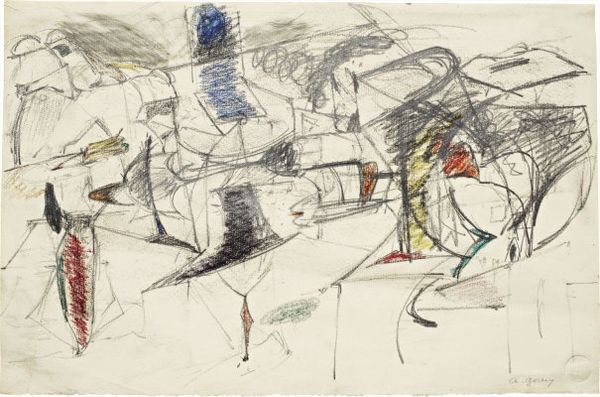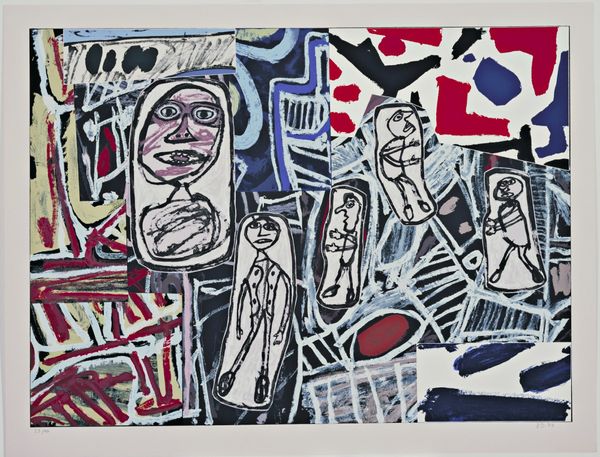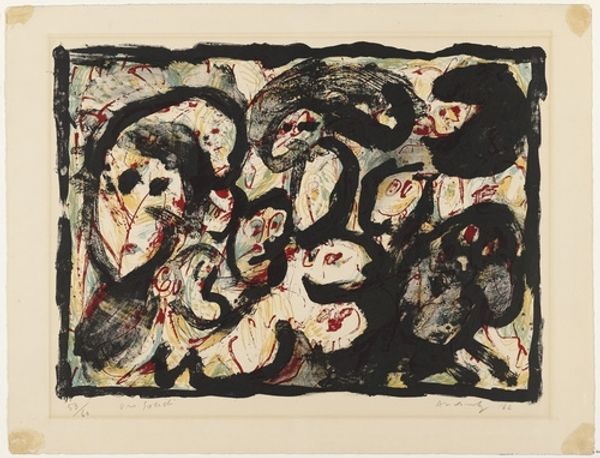
mixed-media, painting, oil-paint
#
mixed-media
#
narrative-art
#
painting
#
oil-paint
#
landscape
#
figuration
#
naïve-art
#
naive art
#
mixed media
Copyright: M.F. Husain,Fair Use
Curator: This painting, entitled "Tonga", was created in 1950 by M.F. Husain, utilizing mixed media techniques, primarily oil paint. What strikes you most about it? Editor: It has an appealing, almost childlike directness to its application of materials. The figures are rudimentary, yet there's movement, a clear sense of something underway. What can you tell me about the process? Curator: Husain’s early works like this are so interesting within the larger scope of post-colonial Indian art. The ‘tonga,’ or horse-drawn carriage, acts as a powerful symbol of movement, progress, and also the realities of class and labor. Editor: Indeed. And consider the labor itself, here—the hand of the artist is evident. The raw quality and application, the exposed texture; it speaks to a certain unrefined beauty found in folk art, maybe rejecting more traditional, academic approaches. What's significant about the "naïve" aesthetic? Curator: That's a fantastic point! There’s an element of deliberate "rawness," as you said. One could read it as Husain's rejection of the artistic conventions of the Western gaze in favor of a more culturally rooted and authentic expression of his lived experience and commentary on mobility within newly independent India. Note how the central figures appear veiled or shadowed – commenting perhaps on representation. Editor: I notice the tiger image, adorning the carriage. The material presence of the tiger image interests me: as an advertisement, a cultural icon. What does that addition signify? Curator: That detail is fascinating. The tiger undoubtedly injects an immediate sense of power and the symbolic capital embedded in that specific cultural marker. Its placement elevates the narrative—reminding viewers of socio-economic complexities interwoven with daily life and, indeed, the power relations in Indian culture, given the history of the tiger as a symbol of Indian nationalism. Editor: Seeing the world from his eyes, in this time period—what I value is this perspective offered by this presentation of those everyday materials and lived narratives. Curator: It provides a critical entry point to discussions about artistic intention, cultural representation, and the evolving construction of identity within post-independence India. Editor: Precisely, thinking about his art, about the conditions, and what was possible for him... That's compelling.
Comments
No comments
Be the first to comment and join the conversation on the ultimate creative platform.

